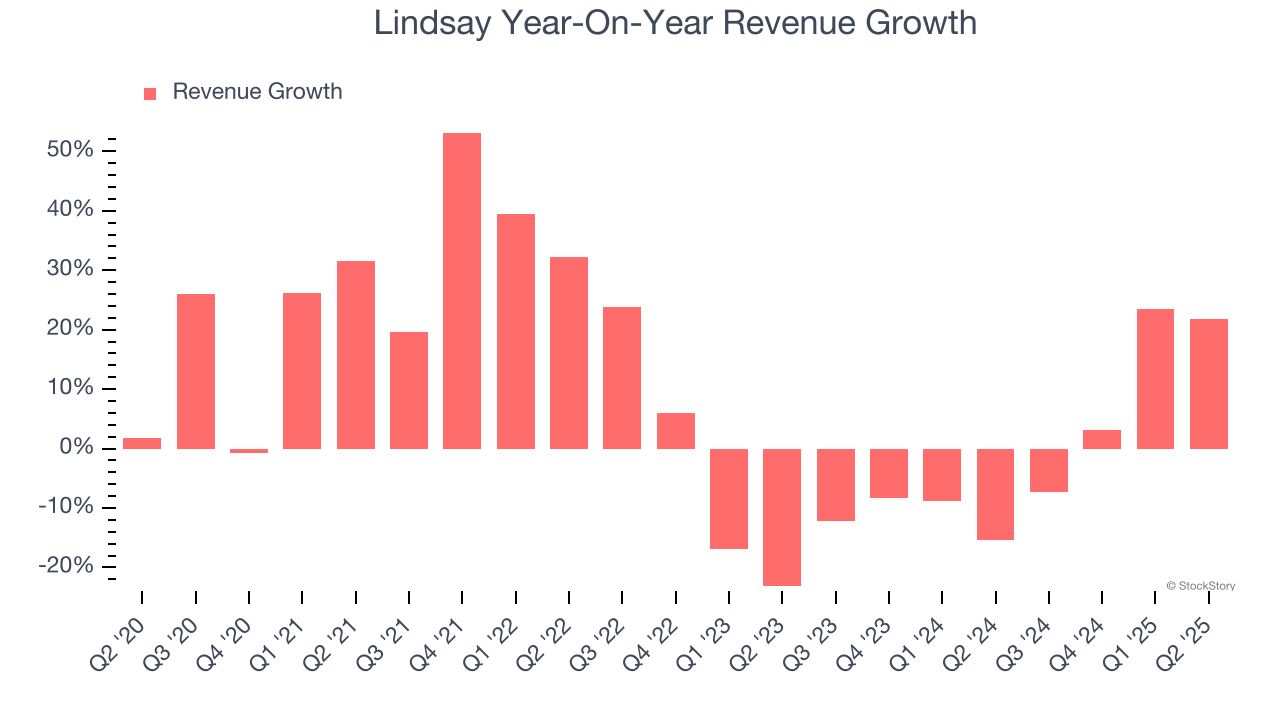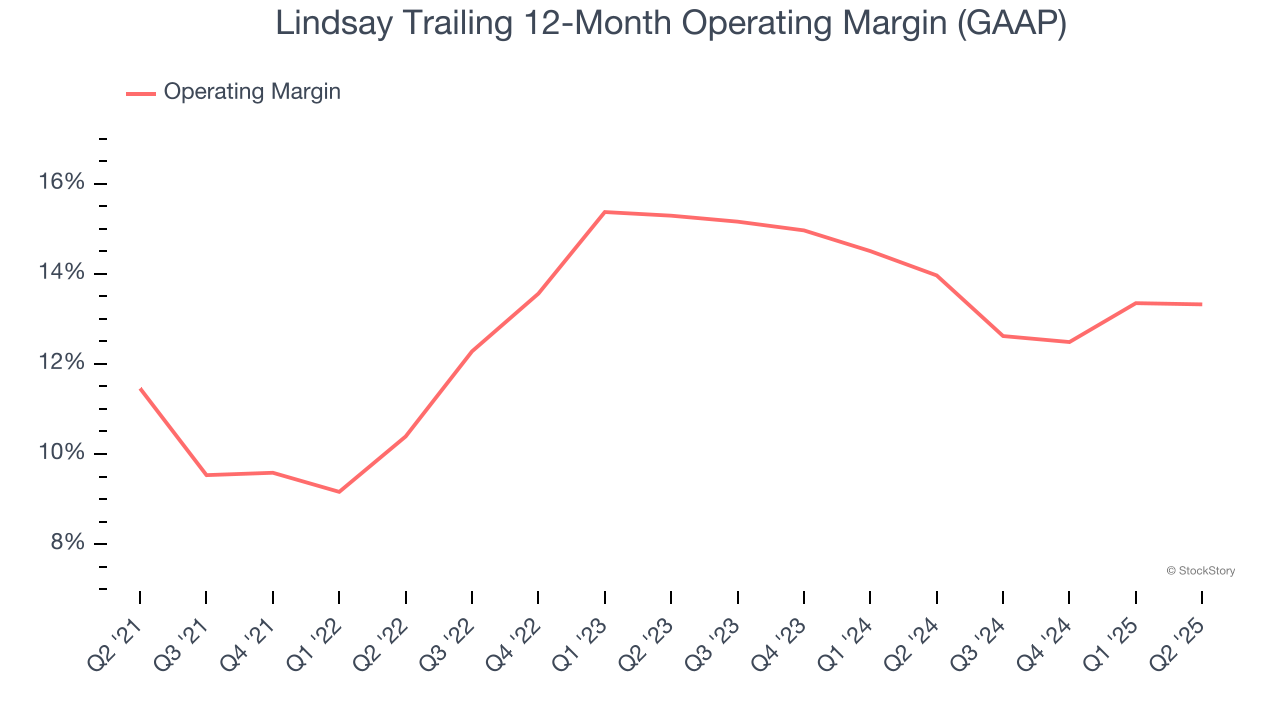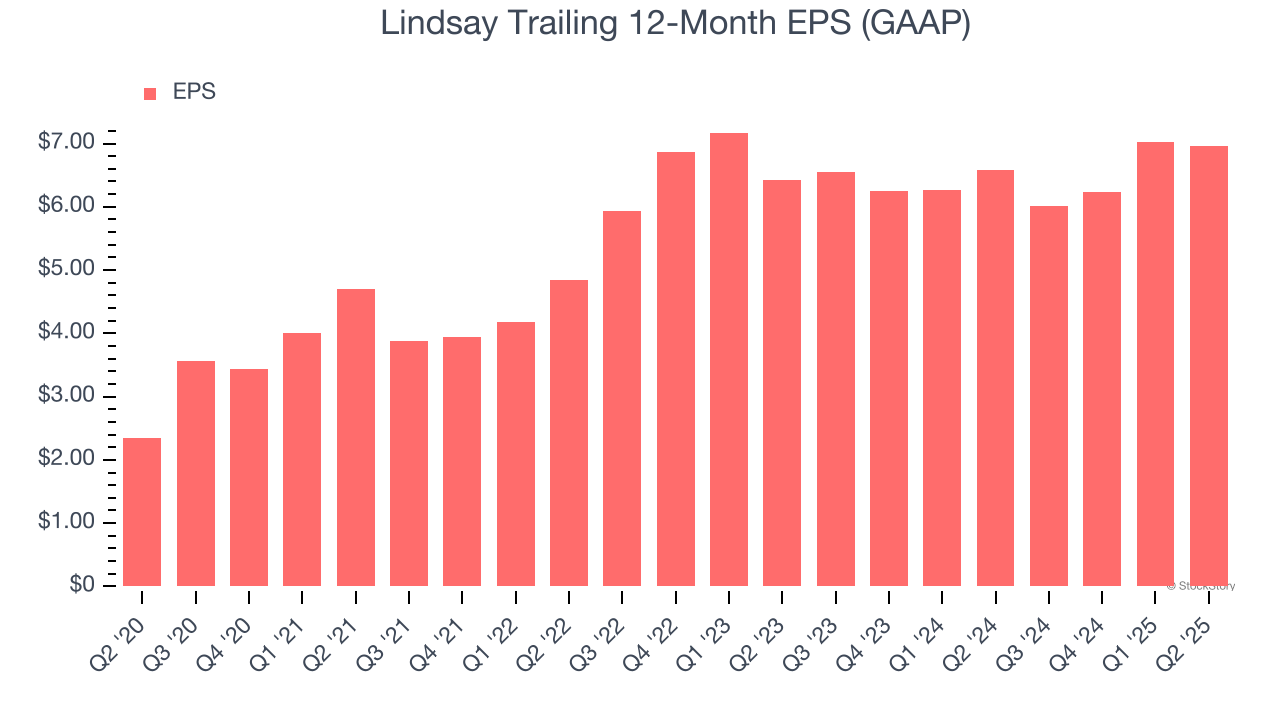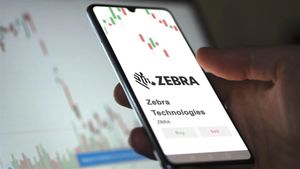
Agricultural and farm machinery company Lindsay (NYSE: LNN) reported Q2 CY2025 results exceeding the market’s revenue expectations, with sales up 21.7% year on year to $169.5 million. Its GAAP profit of $1.78 per share was 26.7% above analysts’ consensus estimates.
Is now the time to buy Lindsay? Find out by accessing our full research report, it’s free.
Lindsay (LNN) Q2 CY2025 Highlights:
- Revenue: $169.5 million vs analyst estimates of $162 million (21.7% year-on-year growth, 4.6% beat)
- EPS (GAAP): $1.78 vs analyst estimates of $1.41 (26.7% beat)
- Adjusted EBITDA: $30.91 million vs analyst estimates of $23.89 million (18.2% margin, 29.4% beat)
- Operating Margin: 14%, in line with the same quarter last year
- Free Cash Flow Margin: 15.1%, down from 18.5% in the same quarter last year
- Market Capitalization: $1.49 billion
“Continued strength in our international irrigation business, supported by ongoing project revenues in the MENA region, led to strong irrigation revenue growth for the quarter and a 22 percent increase in our overall revenues compared to last year," said Randy Wood, President and Chief Executive Officer.
Company Overview
A pioneer in the field of center pivot and lateral move irrigation, Lindsay (NYSE: LNN) provides a variety of proprietary water management and road infrastructure products and services.
Revenue Growth
Examining a company’s long-term performance can provide clues about its quality. Any business can experience short-term success, but top-performing ones enjoy sustained growth for years. Thankfully, Lindsay’s 8.6% annualized revenue growth over the last five years was decent. Its growth was slightly above the average industrials company and shows its offerings resonate with customers.

We at StockStory place the most emphasis on long-term growth, but within industrials, a half-decade historical view may miss cycles, industry trends, or a company capitalizing on catalysts such as a new contract win or a successful product line. Lindsay’s recent performance marks a sharp pivot from its five-year trend as its revenue has shown annualized declines of 1.4% over the last two years. Lindsay isn’t alone in its struggles as the Agricultural Machinery industry experienced a cyclical downturn, with many similar businesses observing lower sales at this time. 
This quarter, Lindsay reported robust year-on-year revenue growth of 21.7%, and its $169.5 million of revenue topped Wall Street estimates by 4.6%.
Looking ahead, sell-side analysts expect revenue to decline by 5.4% over the next 12 months, a deceleration versus the last two years. This projection doesn't excite us and suggests its products and services will see some demand headwinds.
Today’s young investors won’t have read the timeless lessons in Gorilla Game: Picking Winners In High Technology because it was written more than 20 years ago when Microsoft and Apple were first establishing their supremacy. But if we apply the same principles, then enterprise software stocks leveraging their own generative AI capabilities may well be the Gorillas of the future. So, in that spirit, we are excited to present our Special Free Report on a profitable, fast-growing enterprise software stock that is already riding the automation wave and looking to catch the generative AI next.
Operating Margin
Lindsay has been an efficient company over the last five years. It was one of the more profitable businesses in the industrials sector, boasting an average operating margin of 12.9%. This result was particularly impressive because of its low gross margin, which is mostly a factor of what it sells and takes huge shifts to move meaningfully. Companies have more control over their operating margins, and it’s a show of well-managed operations if they’re high when gross margins are low.
Analyzing the trend in its profitability, Lindsay’s operating margin rose by 1.9 percentage points over the last five years, as its sales growth gave it operating leverage.

In Q2, Lindsay generated an operating margin profit margin of 14%, in line with the same quarter last year. This indicates the company’s cost structure has recently been stable.
Earnings Per Share
We track the long-term change in earnings per share (EPS) for the same reason as long-term revenue growth. Compared to revenue, however, EPS highlights whether a company’s growth is profitable.
Lindsay’s EPS grew at an astounding 24.3% compounded annual growth rate over the last five years, higher than its 8.6% annualized revenue growth. This tells us the company became more profitable on a per-share basis as it expanded.

We can take a deeper look into Lindsay’s earnings to better understand the drivers of its performance. As we mentioned earlier, Lindsay’s operating margin was flat this quarter but expanded by 1.9 percentage points over the last five years. This was the most relevant factor (aside from the revenue impact) behind its higher earnings; taxes and interest expenses can also affect EPS but don’t tell us as much about a company’s fundamentals.
Like with revenue, we analyze EPS over a shorter period to see if we are missing a change in the business.
For Lindsay, its two-year annual EPS growth of 4.1% was lower than its five-year trend. We hope its growth can accelerate in the future.
In Q2, Lindsay reported EPS at $1.78, down from $1.85 in the same quarter last year. Despite falling year on year, this print easily cleared analysts’ estimates. Over the next 12 months, Wall Street expects Lindsay’s full-year EPS of $6.96 to shrink by 8.2%.
Key Takeaways from Lindsay’s Q2 Results
We were impressed by how significantly Lindsay blew past analysts’ EPS expectations this quarter. We were also excited its EBITDA outperformed Wall Street’s estimates by a wide margin. Zooming out, we think this was a good print with some key areas of upside. The stock traded up 6.3% to $145.90 immediately after reporting.
Lindsay may have had a good quarter, but does that mean you should invest right now? If you’re making that decision, you should consider the bigger picture of valuation, business qualities, as well as the latest earnings. We cover that in our actionable full research report which you can read here, it’s free.






